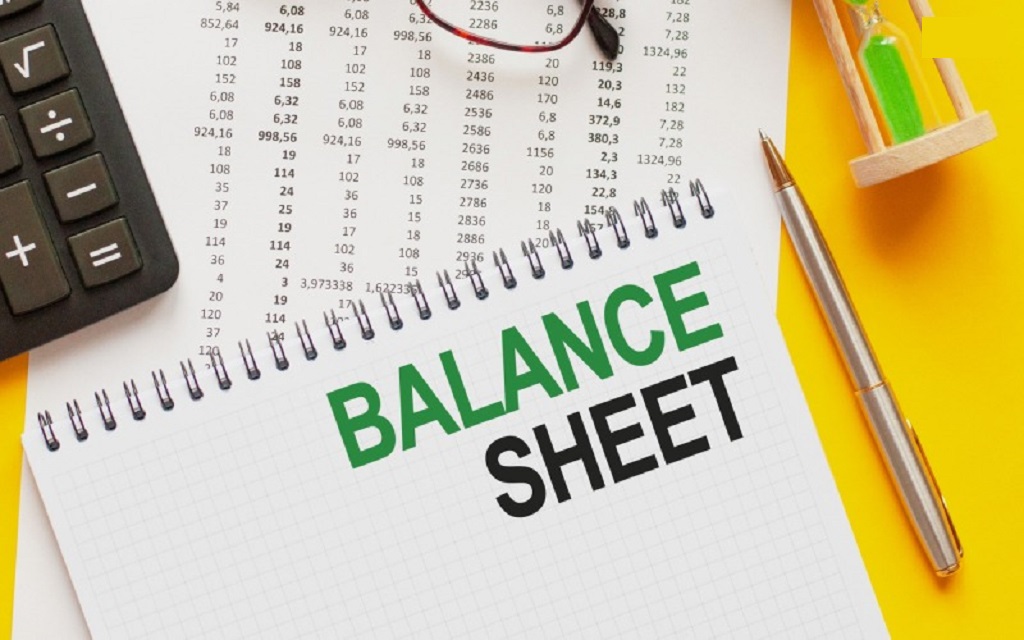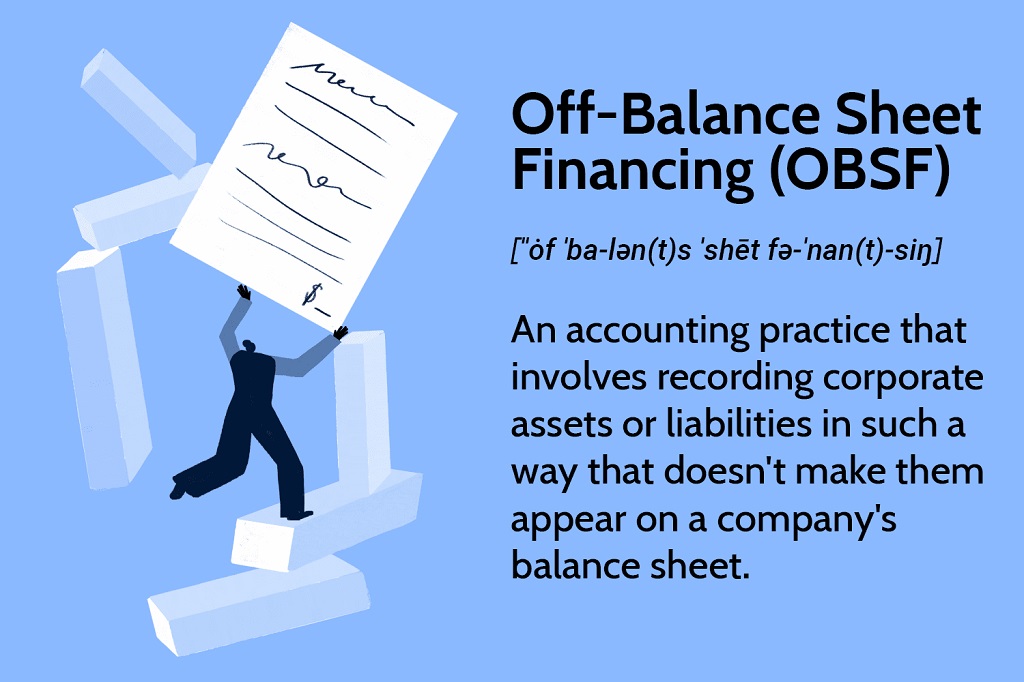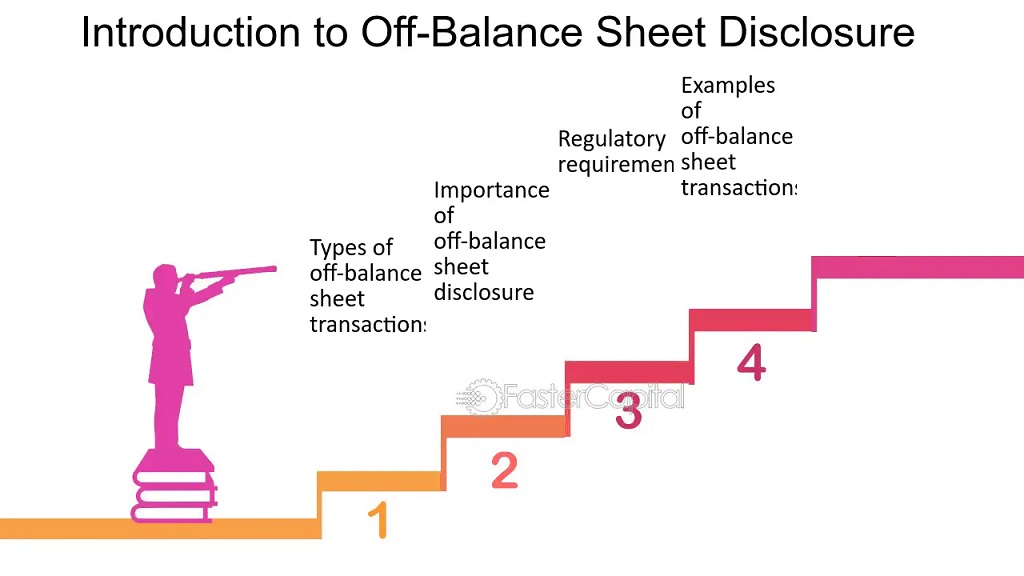
What Account Does Not Appear on the Balance Sheet?
As an investor researching potential stocks, you’ve probably spent countless hours poring through financial statements. You’ve scrutinized the income statement, studied the cash flow statement, and combed through the balance sheet to determine a company’s financial health. But what if I told you that some of the most critical information about a company’s finances doesn’t appear on these statements?
It may sound unbelievable, but it’s true – many accounts and transactions have a major impact on a company’s finances yet are completely excluded from the balance sheet. These are known as off-balance sheet (OBS) items.
In this post, I’ll shed some light on what account does not appear on the balance sheet. Consider this your guide to understanding the hidden financial forces that can make or break a company.
What Exactly Are Off-Balance Sheet Items?
The balance sheet is supposed to provide a comprehensive snapshot of a company’s financial position at a given time. It outlines a company’s assets (anything of value owned by the company) and liabilities (financial obligations owed by the company). The difference between assets and liabilities is shareholders’ equity.
Off-balance sheet items refer to any assets or liabilities that do not appear on the balance sheet for various reasons. Think of them as the balance sheet’s dark twin – they can significantly impact the company’s finances yet remain hidden from view.
Some examples of everyday off-balance sheet items include:
- Operating leases are long-term leases for assets like property, equipment, or vehicles that companies use but don’t technically own. Operating leases keep these assets and liabilities off the balance sheet.
- Letters of credit – Banks make promises to pay a company’s expenses and debts. The bank holds the liability and stays off the company’s balance sheet.
- Derivatives are contracts whose value is linked to an underlying asset. Companies use them to hedge risks but often don’t include them on the balance sheet.
- Unconsolidated subsidiaries – If a parent company owns less than 51% of a subsidiary’s stock, it doesn’t have to include its accounts on its balance sheet.
- Guarantees and warranties – When a company guarantees the value of an asset (like a loan), it’s taking on the risk that doesn’t show up on its balance sheet. The same goes for product warranties.
As you can see, off-balance sheet items take many forms. But they all have one thing in common – they allow companies to take on significant financial risks and obligations without reflecting them on the balance sheet.
This can drastically change the way a company’s finances appear to investors. That’s why knowing what’s lurking off the balance sheet is so important.
How Do Off-Balance Sheet Items Work?
At this point, you might be wondering – how is it even legal for companies to keep significant assets and liabilities off their books? Believe it or not, the Generally Accepted Accounting Principles (GAAP) technically allows off-balance sheet accounting.
The logic is that since the company doesn’t legally own or owe these assets/liabilities, they don’t directly impact its overall financial standing. So, keeping them off the balance sheet paints a more accurate picture.
But as we’ll explore more later, many people argue this is a loophole that companies exploit, not a fair depiction of their finances. First, though, let’s look at some examples that demonstrate how off-balance sheet items work:
Operating Leases
Operating leases are a perfect example of companies taking on significant liabilities yet keeping them hidden through off-balance sheet accounting.
A retail clothing chain needs to open 100 new store locations. Instead of buying the store properties, it decides to lease them under 10-year operating leases. This keeps the $5 million worth of property off its balance sheet as an asset.
However, they still have to make lease payments each month, so they are taking on a liability. A capitalized operating lease can total millions over the lease term. But because technically, the property is not their asset, the future liability of lease payments stays off the books, too.
This allows the company to open new stores and take on hefty long-term lease payments without the liability impacting their debt levels on the balance sheet. Savvy accounting or shady loophole? You be the judge.
Letters of Credit
Letters of credit demonstrate how a company can transfer liabilities to another institution to keep debt off its books.
Suppose a real estate company buys $20 million worth of new construction equipment and parts from suppliers. Rather than taking on debt to pay for these upfront costs, the company could have a bank issue letters of credit to the suppliers.
The bank guarantees the payments will be made on the company’s behalf. So, the company gets the equipment financed without taking on loans. The liability shifts to the bank, never touching the company’s balance sheet.
Unconsolidated Subsidiaries
Unconsolidated subsidiaries show how parent companies can avoid including assets on their balance sheet.
Imagine a technology company that acquires a smaller start-up company. The tech giant buys 45% of the shares in the start-up, so it’s a subsidiary company but not wholly owned. In this case, the parent company does not have to include the subsidiary’s accounts and assets on its consolidated balance sheet.
So, the parent company could control and benefit from assets worth billions, yet those assets remain hidden off the balance sheet. Pretty tricky!
While perfectly legal, you can see how off-balance sheet accounting like this can misrepresent a company’s financial situation. Next, we’ll explore companies’ motivations for hiding assets and liabilities.
Why Do Companies Use Off-Balance Sheet Accounting?
Companies off-balance sheet accounting for a few significant reasons:
- To minimize legal and financial risks by shifting assets/liabilities to other entities
- To preserve borrowing capacity by keeping debt off their books
- To improve financial ratios and metrics like leverage rates and ROA
- To reduce expenses like R&D by using outsourced vendors
- To avoid regulatory requirements that kick in at certain debt/liability levels
- To simplify their financial statements for investors
- To hide risky bets like derivatives from shareholders
Do all of these reasons seem justified to you? Or do some seem like companies exploit loopholes to make themselves look better on paper?
Off-balance sheet accounting is an appealing way for less scrupulous companies to manipulate their financial story. They can undertake risky ventures and significant liabilities without worrying about the negative impact on their financial statements.
Of course, reputable companies use off-balance sheet accounting judiciously and within reason. But there’s no denying that it allows companies to be less transparent about their finances. It’s not ideal if you’re an investor trying to determine whether a company is safe.
This gray area is why off-balance sheet accounting has been so widely criticized. But for now, it remains perfectly legal under GAAP. So, the onus is on smart investors like you to see through companies’ balance sheet trickery.
Next, I’ll explain why it’s important for savvy investors to evaluate off-balance sheet items properly properly.
Why Investors Need to Assess Off-Balance Sheet Items
You’re probably wondering how you can get a glimpse at a company’s off-balance sheet items. After all, if they’re not listed on the financial statements, how can you figure out what assets or liabilities are being excluded?
Unfortunately, companies aren’t required to disclose all of their off-balance sheet activities to investors. So, it would be best if you did some digging independently. Here are some tips:
- Read the footnotes in the company’s financial reports closely. These may reveal lease terms, subsidiaries not being consolidated, derivatives, and other hidden items.
- Research the company’s key contracts and agreements, such as leases, loans, and supply/vendor deals. These could contain obscured liabilities.
- Study the cash flow statement closely for red flags like payments for undisclosed financing or operating leases.
- Consult the MD&A section of financial filings for hints about off-balance sheet obligations.
- Review the proxy statement to see what kinds of executive compensation packages depend on hidden performance targets.
- Check for lawsuits or contingencies that could translate to hidden liabilities.
- Learn the industry norms for off-balance sheet accounting – every sector approaches it differently.
Diligent research like this allows you to estimate a company’s total assets and liabilities – including the ones kept off the books- better. With this fuller picture, you can judge financial health and value more accurately.
Here are some key reasons why investors like you need to put in the work to uncover off-balance sheet items:
More Accurate Financial Ratios
Being aware of off-balance sheet liabilities allows you to recalculate key financial ratios like debt-to-equity to reflect a company’s proper leverage. Many ratios can appear artificially positive when OBS liabilities are excluded. Calculating them yourself paints a more accurate picture.
Assessing Risk More Completely
OBS items often represent significant risks a company takes, like operating lease commitments or derivatives contracts. You need visibility into these risks to determine if a company is prudent about risk management.
Predicting Cash Flows and Liquidity
A company may appear liquid and cash flow positive on paper. However, sizeable off-balance sheet payment obligations like leases can negatively impact future cash flows. Foreseeing this impact allows you to predict solvency better.
Valuing Companies More Accurately
Many valuation models are based on assets/liabilities listed on the balance sheet. But a company’s value should reflect ALL assets and liabilities, even if off the books. Factoring in OBS items leads to truer valuations.
Identifying Aggressive Accounting
Does a company rely heavily on off-balance sheet maneuvers compared to peers? That’s a red flag for aggressive accounting that could mask financial problems or risks.
Seeing the Full Compensation Picture
Executive compensation is often tied to performance targets based on financial statement metrics. Understanding the impact of off-balance sheet transactions allows you to better assess whether compensation is justified.
Sniffing Out Financial Engineering
Heavy OBS activity could signal a company is “cooking the books” or misleadingly structuring finances. Being able to spot financial engineering early is a crucial investor skill.
As you can see, assessing off-balance sheet items yourself is crucial for making intelligent investment decisions and seeing through accounting illusions. It’s extra work for investors but well worth the effort.
Let’s explore real-world examples of how OBS items have burned investors when not adequately evaluated.
Real-World Examples of Off-Balance Sheet Fallout
To demonstrate the dangers of off-balance sheet accounting, have a look at how hidden assets and liabilities have contributed to the collapse of large companies over the years:
Lehman Brothers
The demise of Lehman Brothers during the 2008 financial crisis is a prime example of OBS risk. Lehman used a shady accounting maneuver called Repo 105 to fund their operations.
This allowed them to treat short-term borrowings as asset sales, keeping huge liabilities off the balance sheet. When the extent of their leverage came to light, it sparked a run on the bank and led to their downfall.
Enron
The energy giant’s 2001 implosion was primarily driven by accounting fraud involving off-balance sheet vehicles. Enron exploited these special-purpose entities to hide billions in debt and toxic assets from investors, making Enron seem far more safe and profitable than it really was.
Freddie Mac
The home mortgage provider was another casualty of the 2008 crisis. Freddie kept its risky subprime mortgage loan assets off the books through complex derivative purchase agreements, which allowed it to underestimate its vulnerabilities, leading to its failure.
These examples demonstrate how hidden OBS risks can accumulate and eventually prove catastrophic when not priced into investor expectations. The good news is that regulations around off-balance sheet accounting have tightened since these cases. But OBS loopholes still exist and need your attention as an investor.
Next, I’ll outline some fundamental changes in accounting standards that aim to increase OBS’s transparency.
Recent Regulatory Changes Affecting OBS Disclosure
After the role off-balance sheet accounting played in the Enron scandal and the 2008 financial crisis became apparent, regulators and standard-setters got to work. They recognized that more rigor and transparency around OBS items were needed to protect investors and prevent similar debacles.
Some of the most critical regulatory updates in recent years include:
FASB Changes for Variable Interest Entities – The Variable Interest Entity (VIE) structure was ground zero for Enron’s fraud. The Financial Accounting Standards Board (FASB) significantly tightened the rules around consolidating VIEs, bringing billions back onto balance sheets.
FASB Updates to Lease Accounting – In 2016, the FASB updated its lease accounting standards to require operating leases to be reflected as assets and liabilities. This change has also resulted in trillions of dollars of leases moving back onto the books.
IFRS Consolidation Rules – The IASB (International Accounting Standards Board) has also instituted stricter consolidation standards, especially for “structured entities” that weaker standards allowed companies like Enron to exploit.
Stricter SEC Disclosure Rules – The SEC now requires more detailed disclosures in financial filings about OBS partnerships, sponsors, and arrangements to make risks more visible.
SOX Internal Controls – The Sarbanes-Oxley Act (SOX) required companies to tighten up internal controls and auditing procedures, making fraud like Enron’s more complicated.
While imperfect, these regulatory updates have likely made off-balance-sheet accounting more transparent and reduced systemic risk. Nonetheless, it would be best to put on your detective hat as an investor to dig into footnotes and decipher opaque disclosures. Get ready to work like Sherlock Holmes to piece together clues about a company’s accurate finances!
Next, I’ll run through some key takeaways from our deep dive into the shadowy world of off-balance sheet accounting.
Critical Takeaways as an Investor
After learning all about off-balance sheet items and seeing how destructive they can be if misused, you may feel like a boxer who’s been bruised but is now ready to return to the ring! Here are some key lessons to take with you:
- Off-balance sheet assets/liabilities can significantly impact a company’s finances unbeknownst to investors. Be aware they lurk out of sight.
- There are legitimate reasons to use off-balance sheet accounting, but there is also much room for manipulation. Look for red flags.
- Master detective skills are required to research and estimate a company’s assets/liabilities. Roll up your sleeves and get digging!
- Recalculate key ratios yourself to avoid being misled by manipulated financials. You’ve got this!
- Size up risks more completely by sniffing out hidden commitments like leases and derivatives contracts.
- Question earnings quality if compensation metrics are tied to financials known to exclude OBS items.
- Conservatism and transparency around off-balance sheet accounting are positive signs to look for in companies.
- Regulatory changes are improving OBS transparency, but loopholes still abound. Keep your guard up.
With the knowledge you’ve gained here, you can approach investing with a clearer vision and avoid being duped by accounting illusions. You worked hard to see through to a company’s financial position – now make intelligent investment decisions you can feel confident about!
To recap off-balance sheet accounting at a high level, let’s run through some frequently asked questions.
FAQs About Off-Balance Sheet Items
What are some common examples of off-balance sheet items?
Some major off-balance sheet items include operating leases, letters of credit, derivatives, unconsolidated subsidiaries, guarantees, and warranties. These allow companies to exclude assets and liabilities from their balance sheet.
Why do companies use off-balance sheet accounting?
To minimize legal/financial risks, preserve borrowing capacity, improve financial ratios, reduce expenses, avoid regulations, simplify statements, and, sometimes, hide risky bets from investors.
How can investors evaluate off-balance sheet liabilities?
It takes diligence to read footnotes closely, research key contracts and leases, study the cash flow statement, check the MD&A, and learn industry OBS norms.
What are some red flags to watch out for?
Aggressive OBS accounting compared to peers, outsized executive compensation tied to financial metrics, frequent one-off “gains” boosting earnings, and opaque disclosure around partnerships and subsidiaries.
Have regulations reduced off-balance sheet accounting risks?
Significant regulatory changes like SOX updated lease accounting standards and stricter consolidation rules have improved OBS transparency. But risks remain for unwary investors.
This comprehensive guide on decoding off-balance sheet accounting concludes! You now have the knowledge to see through accounting distortions and make investment decisions with clarity.
Conclusion: Look Beyond the Balance Sheet to See the Full Picture
Like a magician distracting you with one hand while sleight of hand happens out of view, companies can present a misleading financial picture to investors through off-balance sheet accounting.





Average Rating